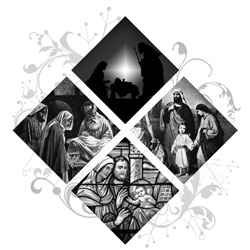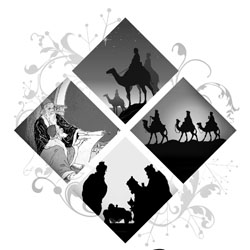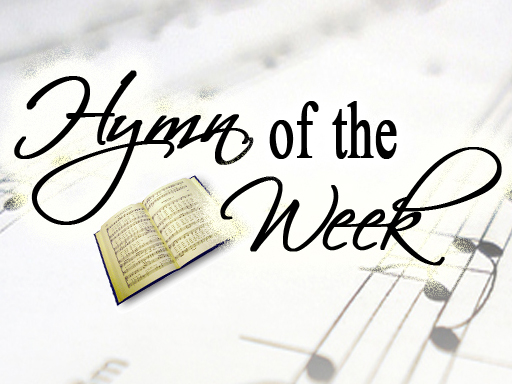Nativity Scene
The following text is drawn from our featured Christmas book and is also available for free as audio.
 Records indicate that as early as the fourth century, churches were setting up manger scenes. However, St. Francis of Assisi, a 13th century friar, is credited with taking the scene beyond the walls of the church and popularizing it.
Records indicate that as early as the fourth century, churches were setting up manger scenes. However, St. Francis of Assisi, a 13th century friar, is credited with taking the scene beyond the walls of the church and popularizing it.
St. Francis of Assisi was a fascinating man. It appears that in his youth he loved pleasure and spent money lavishly. But God was soon to capture his attention. At about 20 years of age, Francis took part in a small local battle. He was taken prisoner and was held for over a year. During this time of captivity, Francis determined to live a more noble and meaningful life, and once he was free, he set out to pursue a military career.
One night before heading off for war, Francis had a dream in which he saw a long hall hung with armor bearing the sign of the cross. He heard a voice say, “These are for you and your soldiers.” Francis awoke feeling certain that he would achieve great success in battle. However, an illness detained his journey, and another dream persuaded him to return to Assisi in Italy.
After much prayer, Francis finally recognized that God had been directing him to a spiritual life, and, setting pride aside, he humbly submitted. On noticing his changed demeanor and distracted mind, his companions teased him and asked if he had plans to be married. Francis replied, “Yes. I am about to take a wife of surpassing fairness.” Sure enough, it was “Lady Poverty” to which he would devote his life. Francis had been meditating on Scripture and was struck by Christ’s commandment to leave all things and follow him. This became the rule of his life.
Though people scoffed at Francis initially, with time he would earn the love and respect of his generation, as well as many generations to follow. The popularity of Francis may largely be attributed to his winsome personality. He delighted in humanity, animals, nature and song. In fact, it is believed that St. Francis and his friars were the first to compose Christmas carols.
Apart from his happy demeanor, the most prominent attribute for which Francis is remembered is his sympathy. Quite novel to the medieval world in which Francis lived, he showed a special affection for the poor, the sick and the fallen. It was probably his love for the poor that moved him to re-enact the Nativity scene that has become a familiar symbol of Christmas. Francis wanted to give a visual demonstration of the poverty into which our Lord was born (remember that the poor were also illiterate). He said that his intention was “to celebrate the memory of the Child who was born in Bethlehem and see with my bodily eyes, as best I can, how He suffered the lack of all those things needed by an infant; how He was ‘laid in a manger’ and how He rested on the straw, with the ox and ass standing by.”
In 1223 at Greccio, Italy, St. Francis received a manger, some straw and a few animals from his friend John Velita in order to accomplish his task. The simple scene, illuminated by the light of candles and torches and accompanied by the singing of the audience, surely accomplished the intended goal of visually revealing the humble circumstances into which Jesus entered the world.
Many people are surprised to learn that the biblical record does not specifically mention straw, ox, ass or even stable. However, the fact that Jesus was laid in a manger (a food trough for animals), makes it reasonable to assume that it would be located in a stable and stuffed with hay, the most accessible material with which to cushion the manager.
In regard to the presence of ox and ass, this tradition may have come from the words of Isaiah (written 700 years before the birth of Christ): “The ox knows its owner and the donkey its master’s manger, but Israel does not know, my people do not understand.” As early as the second century, Christian art portrayed both ox and donkey at the birth of Christ. Knowing that Christ was laid in a manger, it is reasonable to expect that animals were present; however, whether an ox or a donkey were there, no one can be sure.
Over the centuries, Nativity scenes have evolved into much more elaborate displays that include Jesus, Mary, Joseph, Shepherds, Wise Men, an Angel (or Angels) and in some cases even the star of Bethlehem. Though the scenes may not be perfectly historical (for example, the Bible records that the Wise Men arrived at a “house,” not the manger), they continue to inspire worship of the newborn King, the Creator of the Universe, who entered his world in profound humility. Surely, this worship of the Lord is the end for which St. Francis labored.
Back to Main Christmas Symbols Page.
We welcome your questions and feedback. If you are seeking information on the Nativity scene that is not found on our website, please contact us.
This content has a copyright © 2008 by Angie Mosteller. Please cite the source if you use this material: http://www.celebratingholidays.com/?page_id=1576.






